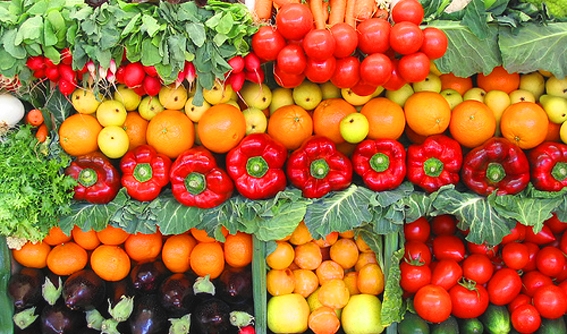Retail View: A snapshot of the California retail scene
Analyzing scan data from almost 3,800 California supermarkets, the latest Market Report from the Fresh Produce & Floral Council showed that fresh fruit and vegetable sales volume grew by 4 percent in 2012 while there was a 1 percent increase in retail dollar sales.
In the last quarter of the year, sales gains were even more impressive, with sales volume jumping 6 percent and sales dollars increasing 5 percent. The 2011 year saw both volume and dollars decline in produce sales in California, so the 2012 numbers might well indicate an economic turnaround.
Fusion Marketing, which is a Chatsworth, CA-based full-service marketing agency specializing in retail intelligence for perishable and packaged goods, provides the data analysis for the FPFC each quarter. The first California-specific report was produced several years ago and it has undergone extensive refinement ever since. The goal of the proprietary report is to give retailers, especially independent retailers, as well as wholesalers and distributors, usable data on which to base sales and promotion decisions. The report breaks California into four markets — San Diego, Los Angeles, Sacramento and San Francisco — and further divides the produce category into fruits and vegetables and into random weight and fixed weight offerings. In addition, more than three dozen fruits and 50 individual vegetables are analyzed individually with regard to both volume and dollar sales for each market.
Former retailer Dick Spezzano of Spezzano Consulting Services, Monrovia, CA, who is an active member of the FPFC, said the report is much improved and “would be an aid to any retailer.”
Among the information pulled from the latest report is that sales of both conventional and organic produce is up in all four of California’s major markets, but organic produce is clearly outpacing conventional in terms of percentage growth.
Each of the markets registered double-digit growth over the past year in both fresh fruits and fresh vegetables that are organically produced. Northern California consumers outdistance their Southern California counterparts in terms of percentage of dollar sales but organic sales are growing in all the Californian markets analyzed.
In San Francisco, organics now account for about 6 percent of the dollars spent on fruit sales and 5.5 percent of vegetable sales dollar. Those figures represent a 31 percent and 25 percent gain respectively. Sacramento saw dollar sales for organic fruit increase to 4.5 percent while vegetable dollar sales climbed to 5.9 percent. Los Angeles and San Diego show similar percentage increases with organic fruit and vegetable sales now representing 4.5 to 5 percent in each marketplace.
Analyzing specific items shows that California is in line with increasing purchases of some of the more trendy items that are getting lots of time on cable food shows and lots of space in the food sections of the nation’s top newspapers. For example, sales of kale, brussels sprouts and pomegranates each registered significant volume growth in all four markets during 2012. In fact, kale saw volume gains of between 70 and 127 percent, while brussels sprout sales rose 23-43 percent and pomegranates checked in with increases in the range of 22-54 percent.
But the data also showed increases in some of the more common items such as avocados, berries and peppers. Avocado sales continue to climb with volume jumps ranging from 32 percent in San Francisco and Sacramento to 46-47 percent in the San Diego and Los Angeles metropolitan areas. Each of the four markets registered between 16 and 25 percent volume growth in the pepper category.
Berries make an interesting case study as the sales of specialty berries continue to increase tremendously. Buoyed by those sales, the category saw its sales increase by 32 percent in Los Angeles. San Diego also registered significant growth with a 23 percent increase. And San Francisco checked in at about 14 percent. However, Sacramento lagged behind with a growth of only 6 percent.
Experts say the value of this kind of data is that it allows retailers and marketers to drill down into a category and analyze the numbers. Why are berry sales climbing rapidly in Los Angeles but not in Sacramento? Are there fewer promotions? Are there opportunities for new suppliers?
Possibly the most heartening discovery in the latest report for the fresh produce industry is the excellent sales during the fourth quarter of 2012, especially in Southern California with San Diego and Los Angeles registering 10 and 8 percent volume growth in the product category during that most recent time frame.
The data is collected from 1,628 stores in Los Angeles area encompassing four counties; 272 stores in five Sacramento area counties; 596 stores in six Bay area counties; and 316 stores in San Diego County.
For more information or to find out how to receive the entire report contact the FPFC or visit fpfc.org.
Source: Produce News (Tim Linden)


Leave a Reply